Visitors Blu-ray Movie
HomeVisitors Blu-ray Movie 
Blu-ray + DVDCinedigm | 2013 | 87 min | Rated G | Jun 14, 2014
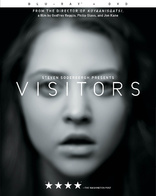
Movie rating
7 | / 10 |
Blu-ray rating
| Users | 0.0 | |
| Reviewer | 4.0 | |
| Overall | 4.0 |
Overview
Visitors (2013)
Dialogue-free documentary about humans' relationship with modern life and with technology. Filmed in black and white, with music by composer Philip Glass, this documentary aims to give people an understanding of how technology has taken over our daily lives. As the camera pans through a selection of people and animals, while they are engaged in a technological activity of some sort, the audience carefully watches for their reactions and expressions.
Director: Godfrey Reggio| Documentary | 100% |
Specifications
Video
Video codec: MPEG-4 AVC
Video resolution: 1080p
Aspect ratio: 2.40:1
Original aspect ratio: 2.39:1
Audio
Music: DTS-HD Master Audio 5.1
Subtitles
None
Discs
50GB Blu-ray Disc
Two-disc set (1 BD, 1 DVD)
DVD copy
Playback
Region A (B, C untested)
Review
Rating summary
| Movie | 3.5 | |
| Video | 4.5 | |
| Audio | 4.5 | |
| Extras | 2.5 | |
| Overall | 4.0 |
Visitors Blu-ray Movie Review
Face the music.
Reviewed by Jeffrey Kauffman May 26, 2014Rarely have the worlds of sight and sound been so inextricably knit together as in the collaborations between director Godfrey Reggio and composer Philip Glass. Thinking about Glass' music can therefore at least help to illuminate what informs Reggio's films from a visual perspective. Though those of you without much if any musical training may not be aware of it, you have been almost subliminally conditioned throughout your life to understand on an emotional level the feelings of tension and relief that one of Western music’s most prevalent tropes—a dominant seventh resolving to its appropriate tonic—creates. In fact, most of the history of Western music from at least the Renaissance on has been a study in the interplay of tension and relief that various harmonic changes generate. While both the Renaissance and Baroque exploited a “horizontal” ambience where intersecting contrapuntal lines established sometimes evanescent “vertical” harmonies, from the Classical period on, most Western composers started thinking (and writing) more vertically, with blocks of harmonies underlying melodies, and thus paving the way for contemporary miniatures like popular songs, where tropes like I-IV-V or I-vi-IV (to use music theory verbiage) are the norm, allowing listeners easy access to content and emotional impact. But one salient characteristic that all traditional Western music shared was what might be termed its "narrative" structure, courtesy of well developed harmonic tropes. Which brings us to the musical movement known as Minimalism, as espoused by such composers as John Adams (not that one), Terry Riley and Philip Glass. Riley’s In C is a good example of some of what makes Minimalism so instantly identifiable if also at least as evanescent as any transitory harmony that appeared in a Renaissance motet. In C provides a series little snippets of music of various lengths—nothing more than motives, really—that each player in the orchestra must move through sequentially at their own self-defined pace. They can, in other words, spend as much time on any given snippet as they want, and the piece can therefore last anywhere from a few minutes to several hours. What happens from a listening experience is something akin to a sonic mandala, where patterns repeat, merge, slightly morph and then ultimately transform into something new. But In C has one salient characteristic that is shared by a lot of other Minimalist compositions—it is a completely bizarre amalgamation of stasis and movement, and whatever "story" it tells is manifestly different from earlier classical compositions. That same unusual combination is certainly part and parcel of Philip Glass’ now iconic collaboration with Godfrey Reggio in The Qatsi Trilogy and now Visitors. When Glass indulges in something like an arpeggiated F major seventh chord or a series of octaves and fifths, there’s a sensation of movement simply because notes are changing, but underlying that feeling of motion is a “ground” (in both the literal and musical senses of the term) where the basic harmonic content is stationary. That dialectic is what I personally feels informs a lot of Reggio’s work from a visual standpoint as well. People have been both entranced and confounded by Reggio’s documentaries, as in fact music lovers have been by Minimalism itself. But if one begins to understand the interplay of motion and stasis in Glass’ music, it may help to illuminate a window through which Reggio’s approach can be framed and, perhaps, more easily understood.
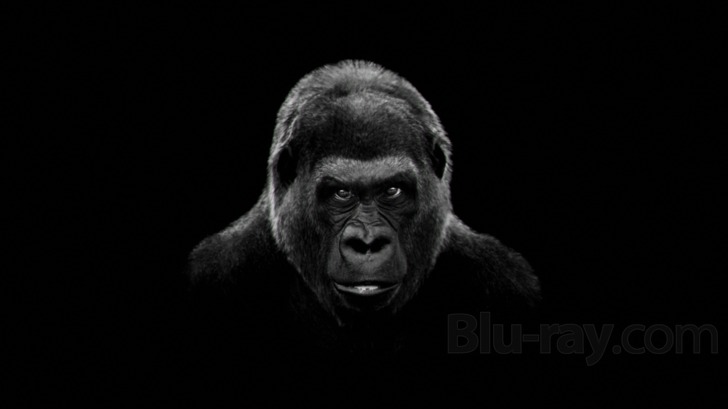
When Koyaanisqatsi premiered in 1982, it heralded not just an entirely new form of documentary, but a rather audacious debut by Reggio, working a wordless form that also eschewed traditional narrative. Koyaanisqatsi was so unique that most viewers probably considered it a “one off”. When Reggio ultimately followed up his first film with the similar Powaqqatsi in 1988 and Naqoyqatsi in 2002, that may have led to the perception of Reggio as a “one trick pony” intent on exploiting his own particular gimmick. But of course part of what made all three films so distinctive was their wordless ambiences, and their evocative imagery set to the music of Glass. Even those who dismiss Reggio’s work as a peculiar form of charlatanism usually admit to having been at least temporarily transfixed, if not hypnotized, by the pair’s singular combination of vision and voice.
On its surface, Visitors might seem to be the least screed like of any of Reggio’s pieces. In fact, some might feel an absolute absence of content here, even more so than in the earlier films, which at least shared a certain allusive quality in terms of Man’s sometimes chaotic relationship with his environment. Here, Reggio spends a rather languorous amount of time exploring various faces of people—and one very forbidding ape. Staring into a face that is in turn staring directly back at you, all for what seems like an extended period of time, can be a bit unnerving, but it’s ultimately what many people are going to take away from this film. Faces.
And yet, there is Reggio intercutting interesting (almost Abstract Expressionist) shots of buildings, towering heaps of trash (in one of the film’s few seemingly “political” statements), birds in flight, and some gorgeous, high contrast shots of various environments that are like seeing an Ansel Adams photograph spring to life. There’s a kind of slow motion montage theory at work in Reggio’s pieces, where each individual’s reactions to slowly segueing material provides the ostensible “content”. In fact, my personal ruminations about Kubrick’s 2001: A Space Odyssey as I watched that aforementioned ape transition into a shot of the moon might be something no one else (even Reggio himself) might ever think about.
As with the previous Reggio-Glass pieces, the slow interplay of light and shadow, of small but notable changes over seemingly static imagery, provides a lot of the visual interest. It's here that Reggio's cinematic marriage with Glass seems especially well formed. A shot of a building, or indeed even of a face, may seem to be static, but in fact it's constantly in a state of flux, however subtle that flux may be. In Visitors, though, there appears to be a somewhat more tangential through line being developed, one which defies easy analysis.
Reggio might encourage critics who claim he’s the Emperor with No Clothes (cinematically speaking, of course) when he does things like discuss evolution, Man, technology and perhaps most quizzically “cyborgs” in interviews appending the Blu-ray, or he in fact may have a completely transparent “narrative” that he feels his imagery and Glass’ music support. That might seem to be at odds with Reggio’s own assertions that he’s all for each individual audience member “co- creating” the film by applying their own reactions and analyses to the material. One way or the other, there’s a definitely subliminal aspect to Visitors that may communicate in ways that neither Reggio nor Glass ever expected.
Visitors Blu-ray Movie, Video Quality 
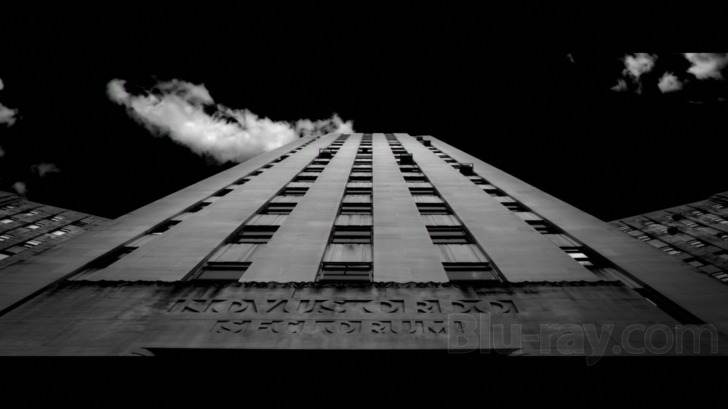
Visitors is presented on Blu-ray courtesy of Cinedigm with an AVC encoded 1080p transfer in 2.40:1. This lustrous black and white (with maybe an exception or two) film makes a beautiful, if decidedly minimalistic, transition to high definition, with richly defined blacks and gorgeously modulated gray scale. It's important not to get completely entranced by the imagery to the point where subtle changes in light and shadow are missed, for even in the supposedly "static" shots of faces, there are often small but incremental changes that take place (including some very subtle dollies in and out of various shots). Clarity is excellent, though fine detail is somewhat limited by the sorts of things Reggio has filmed. As mentioned above, several of the landscapes feature high contrast imagery where whites bloom slightly, intentionally so.
Visitors Blu-ray Movie, Audio Quality 
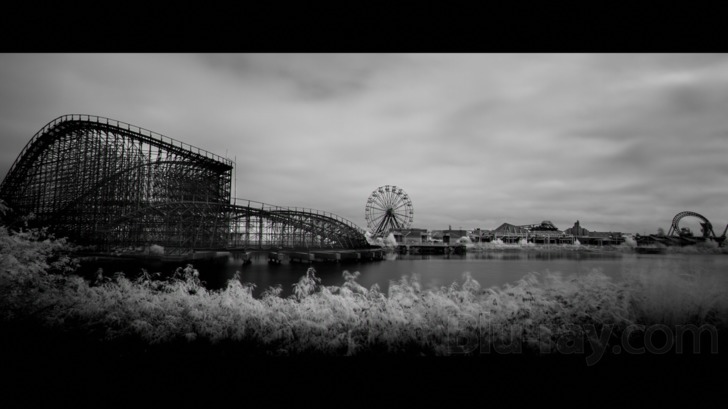
Philip Glass has of course moved on to scoring more overtly dramatic films like Notes on a Scandal, The Illusionist and Kundun, but it's arguable that his intentionally repetitive, shimmering soundscapes are perhaps best suited to the sort of free form, slow burning, imagery that Reggio offers. Glass' music is in fact the only element on the soundtrack of Visitors, presented via DTS-HD Master Audio 5.1, and it sounds warm and inviting, with excellent presence of the strings throughout the surround channels.
Visitors Blu-ray Movie, Special Features and Extras 
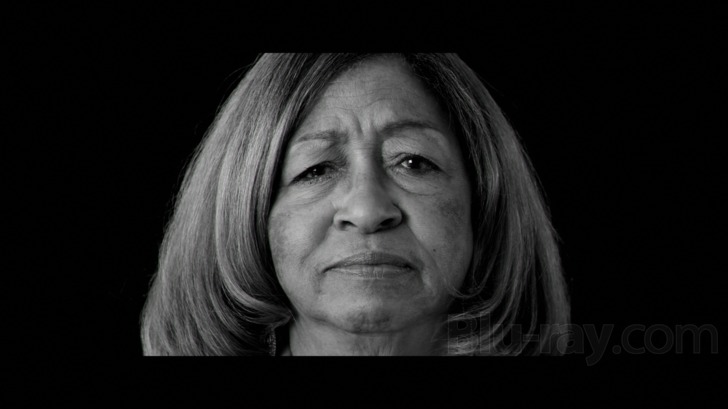
- The Making of Visitors - The Creators Project (1080p; 6:45) features interviews with Godfrey Reggio, Philip Glass, and Jon Kane discussing the film.
- Behind the Scenes of Visitors (1080p; 8:25) spends quite a bit of time on a career retrospective on Reggio before getting into some interesting peeks at the filming process for Visitors.
- Trailers (1080p; 6:37)
- Interviews:
- Godfrey Reggio (1080p; 10:21)
- Philip Glass (1080p; 9:09)
- Jon Kane (1080p; 10:03)
- Steven Soderbergh (1080p; 8:24)
Visitors Blu-ray Movie, Overall Score and Recommendation 
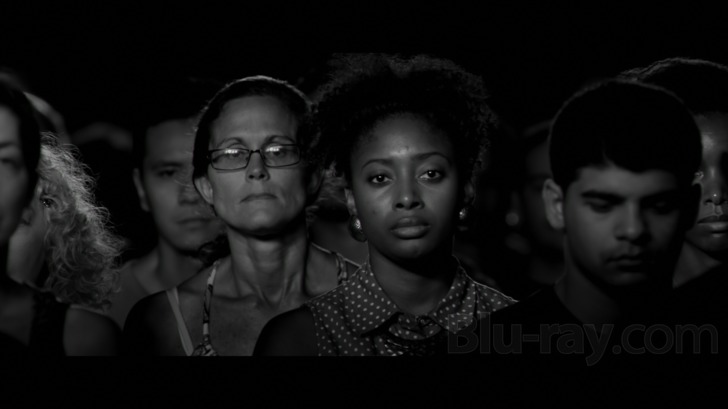
Visitors doesn't have the instant "hook" that Koyaanisqatsi offers, and in fact it's a somewhat opaque experience, despite the almost voyeuristic quality that staring at peoples' faces provides. But there's definitely something subtle at work here that spawns thinking—whether that be thinking about the supposed content of this film, or in fact moving on to a more "meta" exercise of thinking about how one thinks about film. This is another fascinating film that will probably split Reggio fans and deriders along expected lines. The Blu-ray presentation is first rate. Recommended.
Similar titles
Similar titles you might also like
(Still not reliable for this title)

In the Shadow of the Moon
2007

Jodorowsky's Dune
2013

This Is Cinerama
Deluxe Edition
1952

Armstrong
2019

An Inconvenient Sequel: Truth to Power
2017

For the Love of Spock
2016

Tim's Vermeer
2013

How the Universe Works
2010

Helvetica
2007

Land of Silence and Darkness
Land des Schweigens und der Dunkelheit
1971

Symbiopsychotaxiplasm: Take One
1968

Powaqqatsi
1988

The Story of Film: A New Generation
2021

The Maestro: King of the Cowboy Artists
1994

Corman's World: Exploits of a Hollywood Rebel
2011

3-D Rarities
1922-1962

Wonders of the Solar System
2010

The Creeping Garden
Limited Edition
2014

Blackfish
2013

For All Mankind 4K
1989